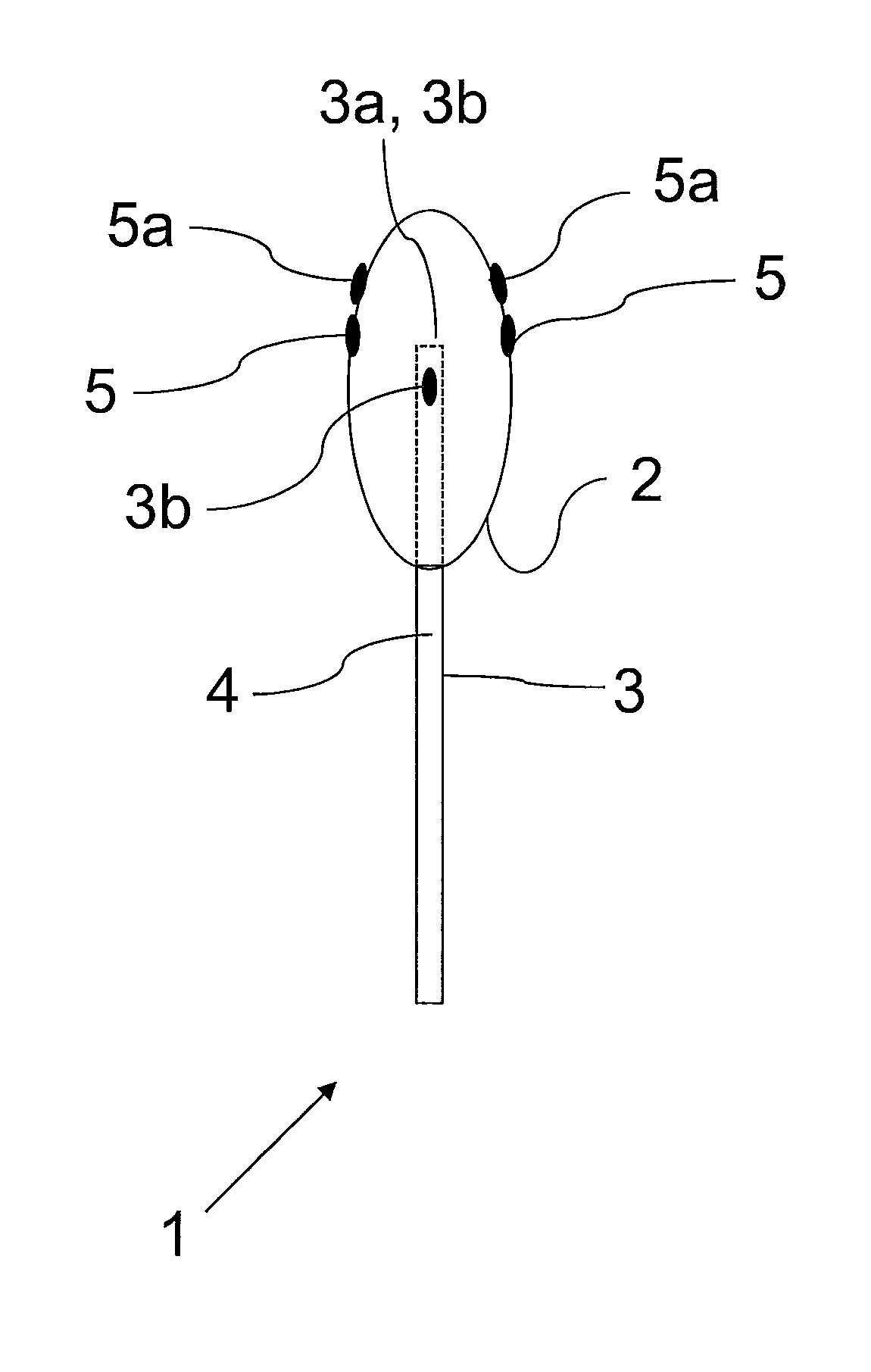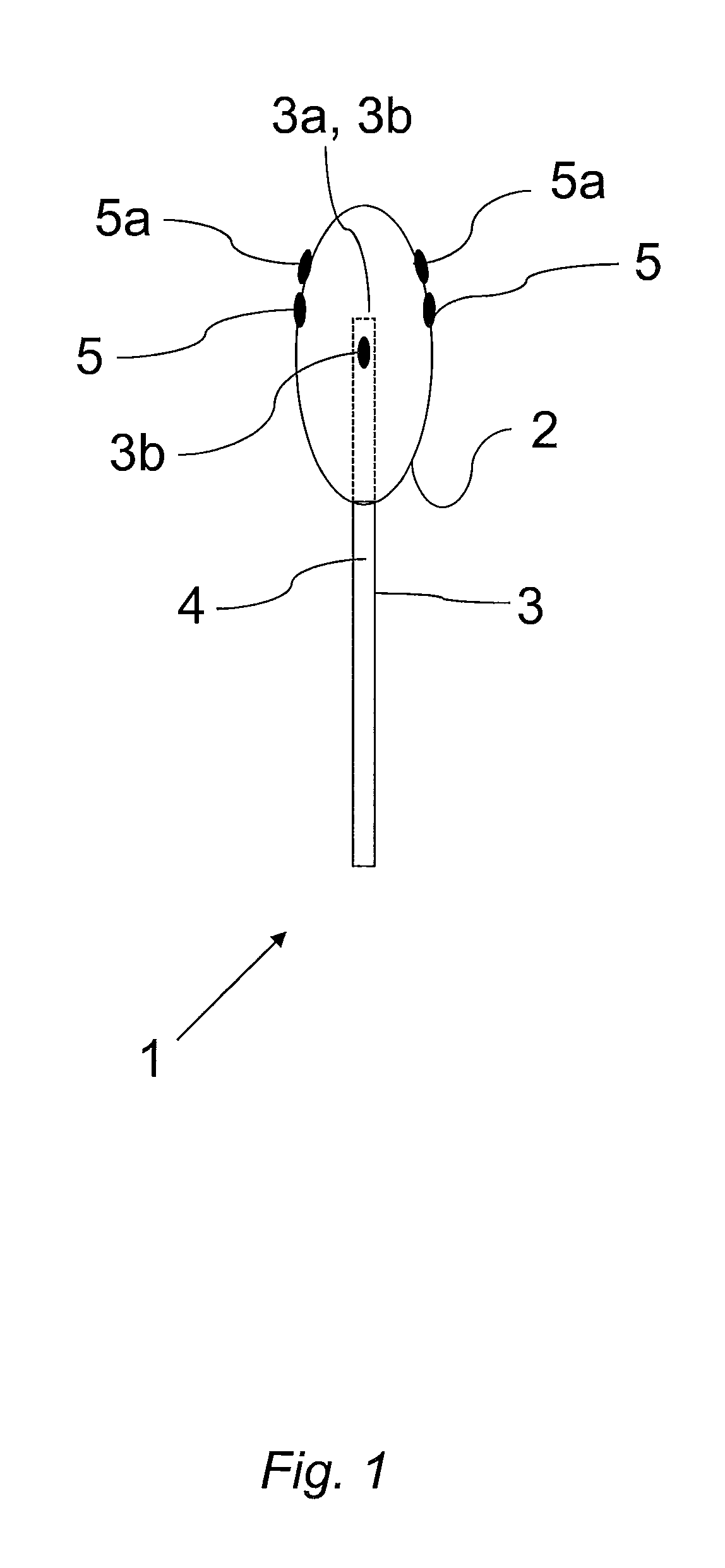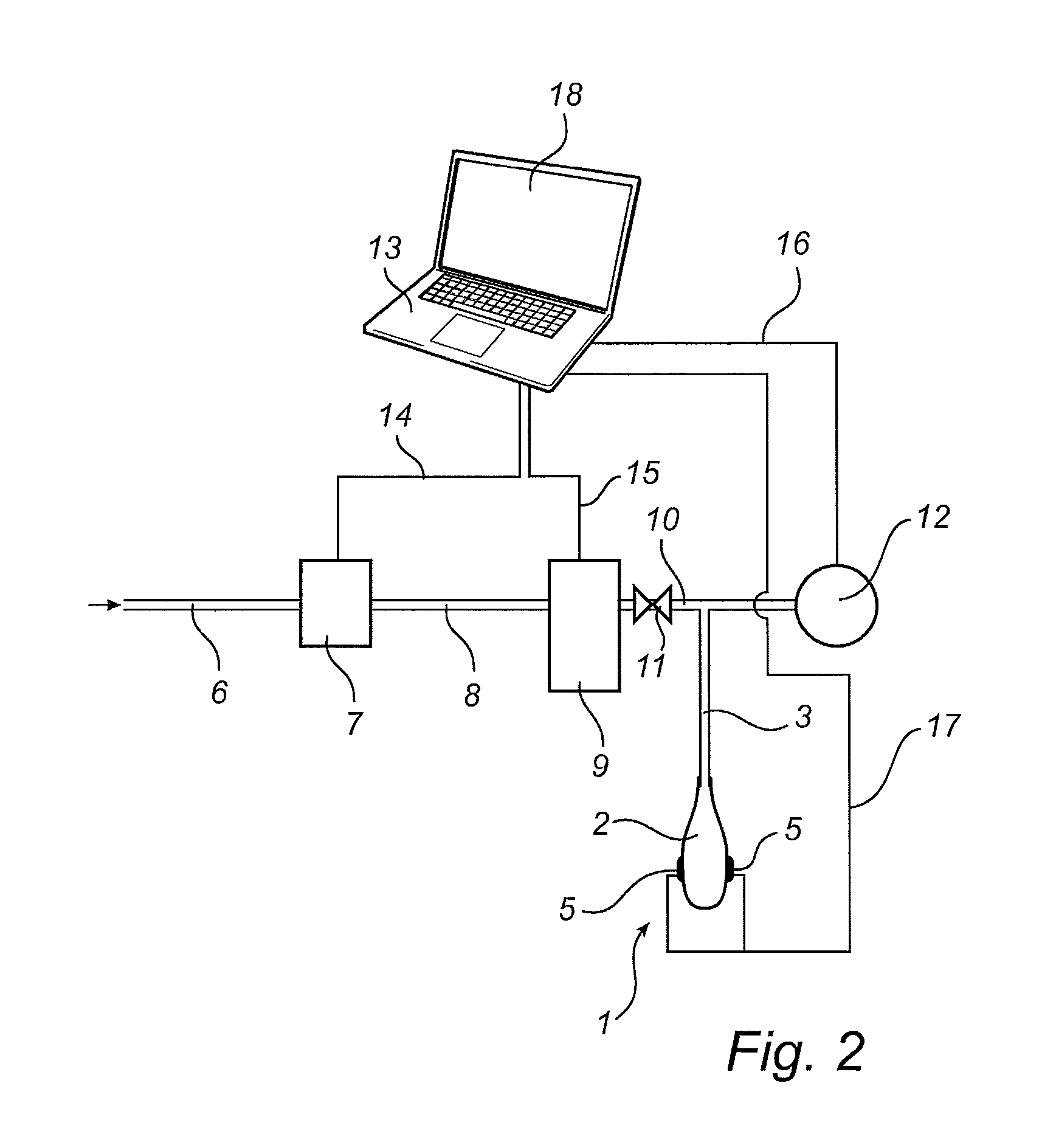Pressure sensing system and method
a pressure sensing and sensing device technology, applied in the field of rhinitis detection devices, systems and methods, can solve the problems of difficult differentiation between allergic rhinitis and other causes of rhinitis, and the effectiveness of antihistamines and nasal corticosteroids may be less effective for other types of rhinitis, so as to reduce the risk of overuse of pharmaceuticals
- Summary
- Abstract
- Description
- Claims
- Application Information
AI Technical Summary
Benefits of technology
Problems solved by technology
Method used
Image
Examples
Embodiment Construction
[0060]The present invention will now be described with reference to the accompanying drawings, wherein the same or similar elements are identified with the same reference numeral.
[0061]With reference to FIG. 1, a specific example of a device according to the device aspect of the present invention will now be discussed. The device 1 for detection of rhinitis in a human subject has two configurations, or states, wherein FIG. 1 depicts a second configuration, or state, of the device. The inflatable member 2 is, in its expanded state, arranged to partly surround an expansion member 3, such that the end portion of the expansion member 3 is located inside the inflatable member 2. The inflatable member 2 is for example a balloon made of a material such as plastic or rubber. In some instances, the inflatable member is made of latex.
[0062]The expansion member 3 comprises at least one channel 4 for supply of fluid to the inflatable member2. The inflatable member 2 thus comprises a chamber for...
PUM
 Login to View More
Login to View More Abstract
Description
Claims
Application Information
 Login to View More
Login to View More - R&D
- Intellectual Property
- Life Sciences
- Materials
- Tech Scout
- Unparalleled Data Quality
- Higher Quality Content
- 60% Fewer Hallucinations
Browse by: Latest US Patents, China's latest patents, Technical Efficacy Thesaurus, Application Domain, Technology Topic, Popular Technical Reports.
© 2025 PatSnap. All rights reserved.Legal|Privacy policy|Modern Slavery Act Transparency Statement|Sitemap|About US| Contact US: help@patsnap.com



